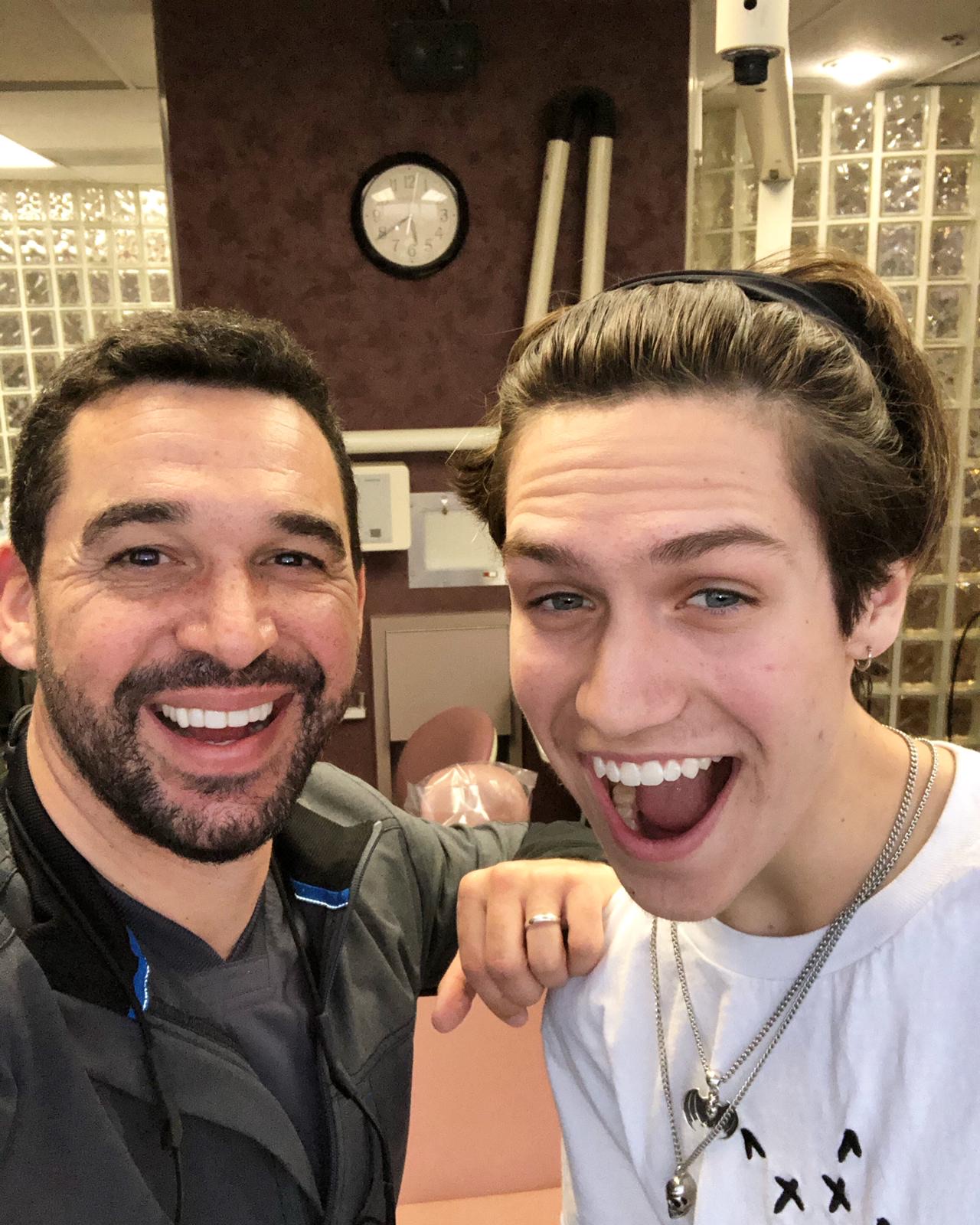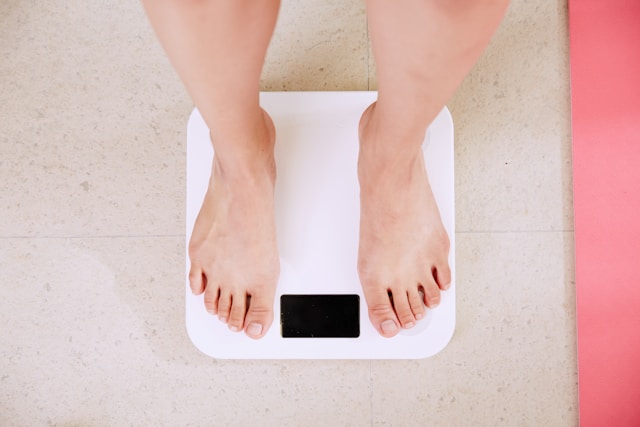Health
Dr. Gabe Rosenthal: The TikTok Era Has Arrived

Social media has boosted or launched the careers of thousands of stars including Shawn Mendes (Vine) and Justin Bieber (YouTube). Heck, it may have even helped Donald Trump become President of the United States. Celebrity Dentist, Dr. Gabe Rosenthal, is no stranger to social media. Chances are, you’ve seen his makeovers and office in a YouTube video or a post on Instagram with his many high profile patients. As much as he’s embraced those two giant social media platforms, he’s beginning to invest in the new kid on the block: TikTok.
“When I first started sharing my work and making videos, Vine stars drew the most clicks and “share”. TikTok, like it’s predecessor Vine (defunct since 2016) is an app where users upload and share edits to catchy and trendy music. Most TikTok videos have users performing a dance routine, often synchronised with a group. Dr. Gabe says that “without a doubt, posts featuring TikTok dances and TikTok stars get 10 times the shares, comments, and likes on Instagram, Facebook, and Twitter that posts with other stars do.”
You don’t have to do dances to grow your audience and boost your business, but it doesn’t hurt. “I have a new TikTok account, but nothing too crazy” the doc says. He is not sure he’s ready to be “the dancing dentist” on this new app. “We have a lot of patients who live in the famous TikTok HypeHouse”, which is a mansion where the top TikTok stars live together to create content. When one of them, like Chase Hudson, aka Lilhuddy, comes in “there’s pandemonium, like it’s the Beatles”. Dr. Gabe says he’s considering doing the famous TikTok dancing, but for now he knows one thing for sure: “The era or TikTok dominance has arrived!” Dr. Gabe thinks in the next year or two, TikTok will be the most relevant and used app.“I post selfies with world champion athletes, award winning movie stars, and celebrated musicians, but most of my followers keep demanding more videos and posts with TikTok stars.” If your business wants to grow or stay on top, maybe it’s time to download TikTok and practice your dance moves.
Health
Finding Your Best Fit: Are GLP-1 Medications Right for Your Weight Loss Journey?

Over the past few years, a class of drugs known as glucagon-like peptide-1 (GLP-1) receptor agonists has been gaining attention, not only for treating type 2 diabetes but also in the field of weight management.
With obesity affecting “at least one in five adults (20%) in each U.S. state,” according to the CDC, many individuals are seeking effective solutions that can complement diet and exercise. Two of the most discussed options are GLP-1 injections for weight loss and GLP-1/GIP for weight loss, both of which have shown promising results.
However, deciding if these medications are right for you isn’t a one-size-fits-all process; it’s essential to determine if GLP-1s are right for you to get you to be your best self in 2025. SimpleFixRx — a healthcare service dedicated to personalized options — can help you explore GLP-1s therapy as part of your 2025 broader health plan.
Understanding GLP-1 receptor agonists
GLP-1 receptor agonists were initially designed to help regulate blood sugar in individuals with type 2 diabetes by mimicking a hormone that controls insulin secretion, slows digestion, and reduces appetite. The recent spotlight on GLP-1 injectors for weight loss and GLP-1/ GIP for weight loss stems from studies showing that these medications can help many people achieve significant, sustained weight loss — often in the 10-15 percent range or more of their body weight — when paired with healthier eating habits and increased physical activity.
Key benefits:
- Enhanced blood sugar control: For individuals with type 2 diabetes, these medications can significantly lower hemoglobin A1C levels.
- Appetite regulation: By slowing gastric emptying and impacting appetite signals, GLP-1s can help reduce unhealthy food cravings.
- Possible cardiovascular benefits: Some research suggests that certain GLP-1s may offer heart-protective effects, reducing the risk of cardiac events.
Who can benefit from GLP-1?
GLP-1 receptor agonists have emerged as a promising option for individuals facing various metabolic and weight-related challenges. Whether you’re dealing with type 2 diabetes or seeking a meaningful way to jump-start weight loss, therapies like GLP-1/ GIP for weight loss and GLP-1 injections for weight loss could help bridge the gap where traditional diet and exercise might fall short.
Individuals with type 2 diabetes
GLP-1s remain a staple in controlling high blood sugar for patients who’ve struggled with traditional oral medications or lifestyle measures alone. If you have type 2 diabetes, speak with your healthcare provider to see if adding a GLP-1 might improve your overall management plan.
Those with obesity or weight-related health concerns
If your body mass index (BMI) is 30 or above — or you’re overweight (BMI 25–29.9) and have additional complications like prediabetes, hypertension, or high cholesterol — GLP-1s might be a strong consideration. The appetite-suppressing effects often help jump-start weight loss.
People seeking a catalyst for lifestyle changes
Even if you haven’t succeeded with traditional diets or exercise routines, medications such as GLP-1/ GIP for weight loss or GLP-1 injections for weight loss may help you regain momentum. Still, a commitment to long-term lifestyle improvements — such as more balanced eating and regular physical activity — is vital to achieving the best results.
Patients with hard-to-control metabolic factors
Some people face genetic or metabolic hurdles that make weight management exceptionally challenging. GLP-1s can help bridge that gap, providing extra support where willpower and standard lifestyle interventions might not suffice on their own.
By combining medical guidance, like that from the experts of SimpleFixRx, with regular follow-ups and a commitment to healthier habits, eligible patients may find these therapies to be a game-changer in achieving sustainable weight management and better overall health.
GLP Squared
Some compound pharmacies are now combining options for GLP medications, allowing for the microdosing of a combination of GLP and GLP1/GIP. Microdosing has numerous benefits for patients, including reduced nausea, a more steady release of medication, and decreased inflammation, among others. SimpleFix does offer GLP squared, and it is less expensive than GLP1/ GIP alone.
The SimpleFixRx approach
SimpleFixRx specializes in providing personalized healthcare solutions, including access to GLP-1 therapies, through a convenient, patient-centered platform. Their team of licensed healthcare providers works closely with patients to:
- Assess eligibility: SimpleFixRx professionals review each patient’s medical history, lifestyle habits, and specific health goals to determine if GLP-1 therapy is appropriate.
- Offer comprehensive care plans: Beyond prescribing medications, SimpleFixRx aims to create a holistic approach that includes nutritional guidance and exercise plans, ensuring GLP-1 therapy is supported by healthier daily habits.
- Monitor progress: Through regular follow-up appointments, patients can collaborate with the SimpleFixRx team to fine-tune their regimen and address any side effects or emerging concerns.
Potential side effects and considerations
While GLP-1s offer noteworthy benefits, they aren’t free of potential drawbacks. The most frequently reported side effects include nausea, diarrhea, and, in some cases, vomiting — especially when first beginning treatment — but these often ease as your body adjusts. Other, more serious risks include pancreatitis or gallbladder issues, though these are generally less common.
Your medical history and personal goals should guide any decision to start GLP-1 therapy. Certain gastrointestinal or thyroid conditions, for instance, could make these medications less suitable. Women who are or might become pregnant also need specialized guidance, as safety data for pregnancy remains limited.
Making the decision with SimpleFixRx
Dr. Garrett H. Garner, M.D., F.A.C.O.G., a board-certified OB/GYN with over two decades of experience in North Texas, highlights the importance of individualized care. “We take the time to review each patient’s medical history, dietary habits, and long-term health objectives. Medications like GLP-1/ GIP or GLP-1 can be game-changers — but they work best within a broader strategy that includes nutrition, exercise, and regular follow-up.”
Before you opt for any GLP-1 medication, consider asking your healthcare provider or a service like SimpleFixRx these five questions:
- “Am I a good candidate for GLP-1s based on my health profile?”
- “How will this therapy interact with other treatments or conditions I have?”
- “What lifestyle changes, if any, should I implement to maximize the benefits?”
- “Which medication — GLP-1/ GIP vs. GLP-1 — would best suit my needs?”
- “How often should I schedule follow-up appointments to assess progress and adjust my treatment plan?”
By partnering with a dedicated healthcare service like SimpleFixRx, you can gain access to expert guidance, personalized care plans, and ongoing support — all crucial components to long-term success.
These therapies are tools, not magic solutions, as sustainable progress often hinges on a combination of effective medication, mindful eating, regular physical activity, and consistent medical oversight. However, with the proper support structure and commitment, GLP-1 medications can be a transformative part of your journey toward better health.
-

 Tech4 years ago
Tech4 years agoEffuel Reviews (2021) – Effuel ECO OBD2 Saves Fuel, and Reduce Gas Cost? Effuel Customer Reviews
-

 Tech6 years ago
Tech6 years agoBosch Power Tools India Launches ‘Cordless Matlab Bosch’ Campaign to Demonstrate the Power of Cordless
-

 Lifestyle6 years ago
Lifestyle6 years agoCatholic Cases App brings Church’s Moral Teachings to Androids and iPhones
-

 Lifestyle4 years ago
Lifestyle4 years agoEast Side Hype x Billionaire Boys Club. Hottest New Streetwear Releases in Utah.
-

 Tech7 years ago
Tech7 years agoCloud Buyers & Investors to Profit in the Future
-

 Lifestyle5 years ago
Lifestyle5 years agoThe Midas of Cosmetic Dermatology: Dr. Simon Ourian
-

 Health6 years ago
Health6 years agoCBDistillery Review: Is it a scam?
-

 Entertainment6 years ago
Entertainment6 years agoAvengers Endgame now Available on 123Movies for Download & Streaming for Free
